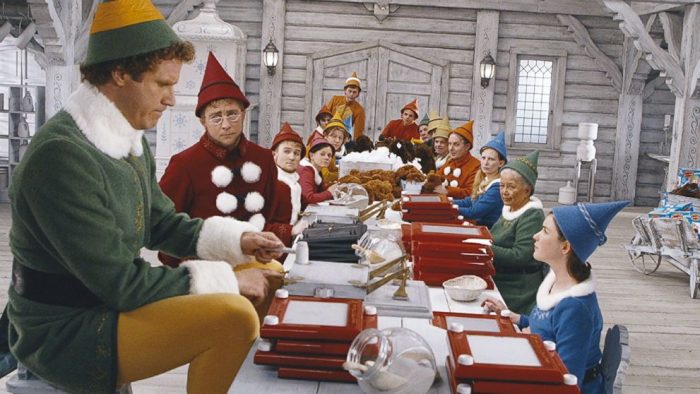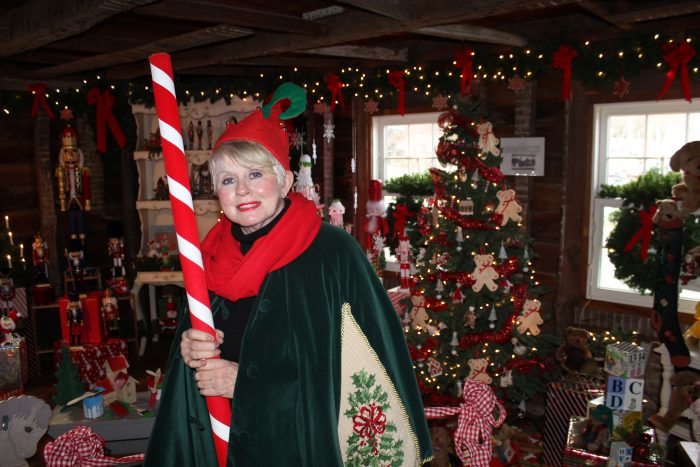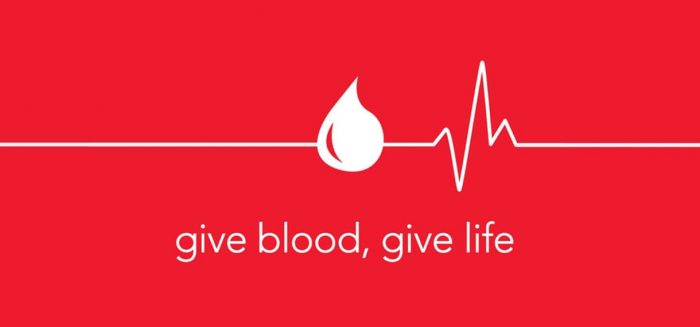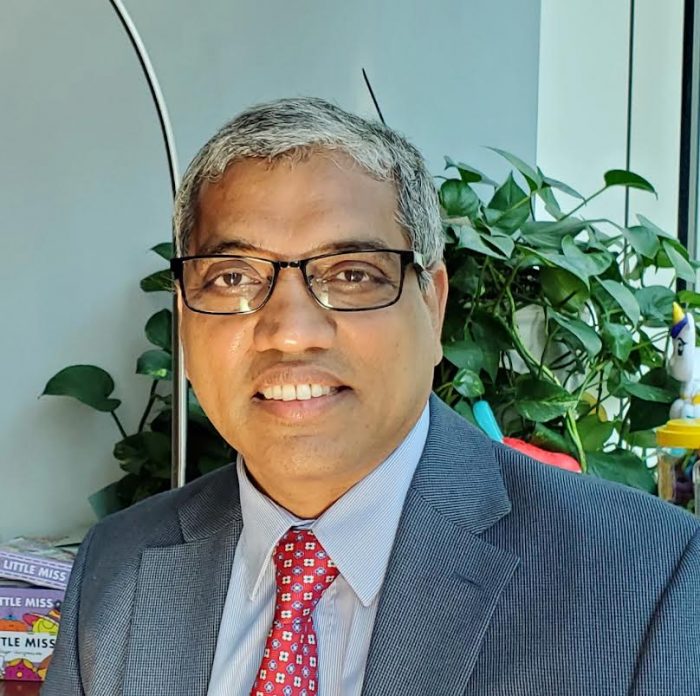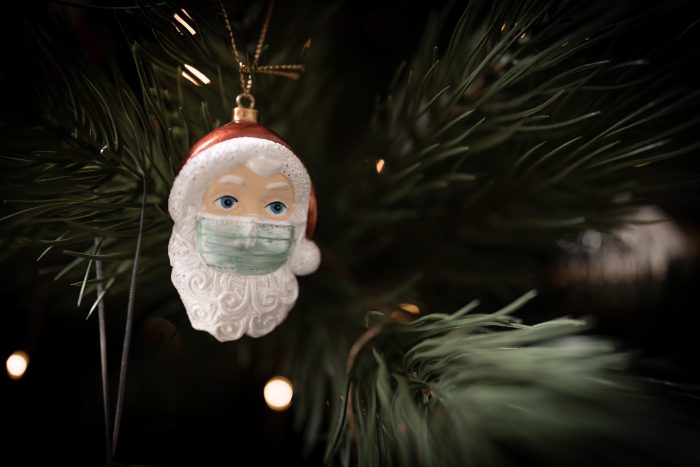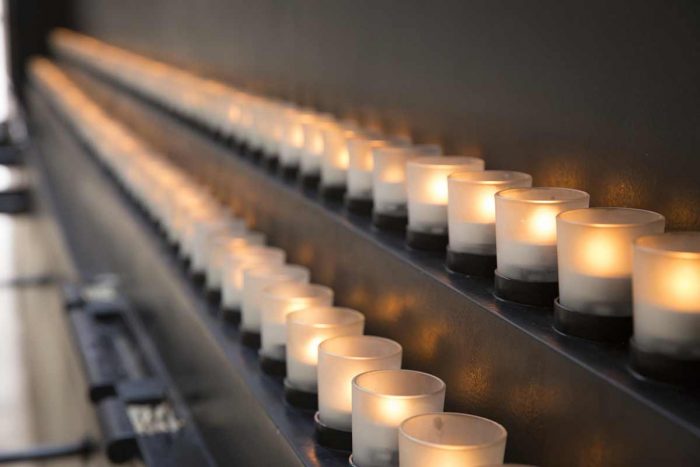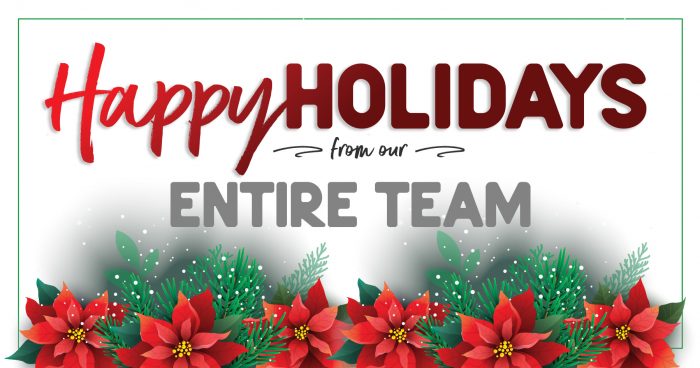Comsewogue Public Library, 170 Terryville Road, Port Jefferson Station will screen a series of holiday movies from Dec. 27 to Dec. 30 at 2 p.m. Join them for Elf on Dec. 27, National Lampoon’s Christmas Vacation on Dec. 28, It’s a Wonderful Life on Dec. 29 and Miracle on 34th Street on Dec. 30. Open to all. Advance registration is required as seating is limited. To register, visit www.cplib.org or call 928-1212.
Yearly Archives: 2021
Your Turn: Santa’s Workshop — A tribute
By Allan Varela
The very successful 25th celebration of Port Jefferson’s Charles Dickens Festival has come to a close for this year, with energetic plans already in the works for the 26th celebration in 2022. Sadly, one of the many bright spots of the event, Santa’s Workshop, will not be returning. The historic Phillips Roe House, aka the Drowned Meadow House located on the corner of Barnum Avenue and West Broadway, which has played host to the workshop all these years, is officially becoming a year-round museum.
For the last seven Charles Dickens Festivals, Santa Claus and his elves came to life through the tireless work of the acclaimed confection artist Pat Darling. The whimsical workshop has welcomed both the young and young at heart to step back in time and reflect on the storybook charm of cherished memories of an era that has quietly faded.
Snowflakes glistening high above the elaborate confection nutcrackers and giant turrets that have adorned the beautiful displays throughout the workshop area set the mood, while children were greeted by sugar trees and toy soldiers.
The wonderment continued into Hollyberry’s bedroom, an elaborate vignette that featured Hollyberry anticipating the night before Christmas as she busily wrapped presents. The nightscape background featured Santa in his sleigh high in the night sky, coming to visit the workshop.
And visit he did, as the third room presented the real live Santa in all his glory, sitting in a giant arched chair as he greeted families. Smiles and happiness are the legacy of this special exhibit.
Pat Darling has charmed literally thousands of people over the years with her creative vision, inspiring execution and attention to detail that made Santa’s Workshop such a very special happening for the Dickens Festival. The workshop will be sorely missed, but the community at large will be eternally grateful for Ms. Darling’s resolute efforts.
Allan Varela serves as chair for the Greater Port Jefferson-Northern Brookhaven Arts Council which hosts the Port Jefferson Charles Dickens Festival.
Photo of the Week
SILVER BELLS
Gerard Romano of Port Jefferson Station was out with his camera on Dec. 17 ‘looking for something appropriate for the season’ when he spied these pretty bells adorning the door of the Belle Terre Village Hall and took the perfect shot. Happy Holidays!
Send your Photo of the Week to [email protected]
Recipe with video: Chocolate Dipped Candied Orange Peels
Chocolate Dipped Candied Orange Peels
Recipe courtesy of Brandi Milloy on behalf of Sunkist

Prep time: 5 minutes
Cook time: 1 hour
Servings: 4
Ingredients:
4 Sunkist Navel oranges
3 cups water
1 1/2 cups sugar
1 teaspoon vanilla extract or vanilla bean paste
1 cup dark chocolate, melted
Directions:
Rinse and dry oranges. Slice both ends off each orange. Using paring knife, carefully score each orange in quarters then remove peel from each section, trying not to get too much pith. Slice peels into 1/4-inch strips. Add to pot and cover with water and sugar; stir. Bring to boil. Turn heat to medium-low until water reaches soft simmer. Simmer 45 minutes. Add vanilla before turning off heat and stirring. Remove peels from syrup and cool on wire rack. Roll in sugar to coat. Dry at least 4 hours, or overnight. Dip candied orange peels one at a time in dark chocolate. Place on parchment paper to set up and harden. Store in airtight container.
See video here.
The Paramount to host annual blood drive Dec. 26
It’s the season for giving.
New York Blood Center will hold its 9th annual blood drive at The Paramount, 370 New York Ave., Huntington on Sunday, Dec. 26 from 9 a.m. to 3 p.m.
Your donation will help to save up to THREE lives. Our community hospitals need your help! Please share this lifesaving gift.
All donors at The Paramount Blood Drive will also receive one (1) pair of tickets to any one of these upcoming shows…while they last!
*The Disco Nights – Friday, January 7th (DISCO), *Best of The Eagles – Thursday, January 14th (CLASSIC ROCK), *Jimmy Kenny & The Pirate Beach Band – Saturday, January 15th (TROP ROCK), *Scotty McCreery – Thursday, January 27th (COUNTRY), *Icons of Vinyl – Friday, January 28th (CLASSIC ROCK), *Voyage – Friday, February 4th (JOURNEY TRIBUTE), *Randy Houser – Thursday, February 10th (COUNTRY)
Eligibility Criteria:
• Bring ID with signature or photo.
• Minimum weight 110 lbs.
• Eat well (low fat) & drink fluids
• No tattoos for past 12 months
• Age 16 – 75 (16-year olds must have parental permission. Age 76 and over need doctor’s note)
For questions concerning medical eligibility call 1-800-688-0900 www.nybc.org.
For more information, please call The Paramount @ 631-673-7300.
SBU’s Ramana Davuluri uses AI to understand and fight cancer
By Daniel Dunaief
Ramana Davuluri feels like he’s returning home.
Davuluri first arrived in the United States from his native India in 1999, when he worked at Cold Spring Harbor Laboratory. After numerous other jobs throughout the United States, including as Assistant Professor at Ohio State University and Associate Professor and Director of Computational Biology at The Wistar Institute in Philadelphia, Davuluri has come back to Long Island.
As of the fall of 2020, he became a Professor in the Department of Biomedical Informatics and Director of Bioinformatics Shared Resource at Stony Brook Cancer Center.
“After coming from India, this is where we landed and where we established our life. This feels like our home town,” said Davuluri, who purchased a home in East Setauket with his wife Lakshmi and their six-year-old daughter Roopavi.
Although Davuluri’s formal training in biology ended in high school, he has applied his foundations in statistics, computer programming and, more recently, the application of machine learning and deep algorithms to the problems of cancer data science, particularly for analyses of genomic and other molecular data.
Davuluri likens the process of the work he does to interpreting language based on the context and order in which the words appear.
The word “fly,” for example, could be a noun, as in an insect at a picnic, or a verb, as in to hop on an airplane and visit family for the first time in several years.
Interpreting the meaning of genetic sentences requires an understanding not only of the order of a genetic code, but also of the context in which that code builds the equivalent of molecular biological sentences.
A critical point for genetic sequences starts with a promoter, which is where genes become active. As it turns out, these areas have considerable variability, which affects the genetic information they produce.
“Most of the genetic variability we have so far observed in population-level genomic data is present near the promoter regions, with the highest density overlapping with the transcription start site,” he explained in an email.
Most of the work he does involves understanding the non-coding portion of genomes. The long-term goal is to understand the complex puzzle of gene-gene interactions at isoform levels, which means how the interactions change if one splice variant is replaced by another of the same gene.
“We are trying to prioritize variants by computational predictions so the experimentalists can focus on a few candidates rather than millions,” Davuluri added.
Most of Davuluri’s work depends on the novel application of machine learning. Recently, he has used deep learning methods on large volumes of data. A recent example includes building a classifier based on a set of transcripts’ expression to predict a subtype of brain cancer or ovarian cancer.
In his work on glioblastoma and high grade ovarian cancer subtyping, he has applied machine learning algorithms on isoform level gene expression data.
Davuluri hopes to turn his ability to interpret specific genetic coding regions into a better understanding not only of cancer, but also of the specific drugs researchers use to treat it.
He recently developed an informatics pipeline for evaluating the differences in interaction profiles between a drug and its target protein isoforms.
In research he recently published in Scientific Reports, he found that over three quarters of drugs either missed a potential target isoform or target other isoforms with varied expression in multiple normal tissues.
Research into drug discovery is often done “as if one gene is making one protein,” Davuluri said. He believes the biggest reason for the failure of early stage drug discovery resides in picking a candidate that is not specific enough.
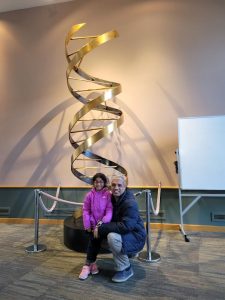
Davuluri is trying to make an impact by searching more specifically for the type of protein or drug target, which could, prior to use in a clinical trial, enhance the specificity and effectiveness of any treatment.
Hiring Davuluri expands the bioinformatics department, in which Joel Saltz is chairman, as well as the overall cancer effort.
Davuluri had worked with Saltz years ago when both scientists conducted research at Ohio State University.
“I was impressed with him,” Saltz said. “I was delighted to hear that he was available and potentially interested. People who are senior and highly accomplished bioinfomaticians are rare and difficult to recruit.”
Saltz cited the “tremendous progress” Davuluri has made in the field of transcription factors and cancer.
Bioinformatic analysis generally doesn’t take into account the way genes can be interpreted in different ways in different kinds of cancer. Davuluri’s work, however, does, Saltz said.
Developing ways to understand how tumors interact with non-tumor areas, how metastases develop, and how immune cells interact with a tumor can provide key advances in the field of cancer research, Saltz said. “If you can look at how this plays out over space and time, you can get more insights as to how a cancer develops and the different part of cancer that interact,” he said.
When he was younger, Davuluri dreamt of being a doctor. In 10th grade, he went on a field trip to a nearby teaching hospital, which changed his mind after watching a doctor perform surgery on a patient.
Later in college, he realized he was better in mathematics than many other subjects.
Davuluri and Lakshmi are thrilled to be raising their daughter, whose name is a combination of the words for “beautiful” and “brave” in their native Telugu.
As for Davuluri’s work, within the next year he would like to understand variants.
“Genetic variants can explain not only how we are different from one another, but also our susceptibility to complex diseases,” he explained. With increasing population level genomic data, he hopes to uncover variants in different ethnic groups that might provide better biomarkers.
Editorial: Staying safe this holiday season
With Christmas this weekend, families are looking to get together for some quality time.
Last Christmas, in the midst of the coronavirus pandemic, people quarantined with just those in their households. It was lonely for some, but they stayed safe, away from contact with other people.
Then 2021 came around and with the vaccines we saw some hope — we began slowly peeling off our masks and traveling again. Families became reunited.
But unfortunately, that was premature and now Suffolk County is at a 14% positivity rate as of Tuesday, Dec. 21.
To put it in perspective, municipalities across New York state were shut down at 5% in the spring of 2020. We have doubled the seven-day average compared to where we were at that time and have not shut down.
And there are reasons for that. Luckily more than a year-and-a-half later we have the vaccines, we have boosters and we know that masks work — we just need to continue using them and continue using common sense.
It’s sad to think that this is the second Christmas where some families might not be able to see their loved ones out of fear. It’s sad that we as a country were doing well and now have fallen back into old habits of not taking care of ourselves and of others.
If we continue not to listen to the Centers for Disease Control and Prevention, our health care providers and the science,
Politicians insist we won’t go into lockdown, but what will happen if the infection rate goes to 20%? What will we do if the hospitals are overfilled again?
With the comfort we felt during this past summer, newly vaccinated with restrictions lifted, some might have forgotten what early 2020 looked like. Visits to grandparents were through a window. Restaurants were not allowed to have inside dining. Disinfectants and masks were impossible to find, while bodies were kept in outside trailers because the morgue was filled to capacity.
We don’t want to head back in that direction, especially with all of the resources now available to us. We have the vaccine, we have the booster, we have masks and we know how to combat this virus. We just need to collectively do it and not treat it lightly.
So, for this holiday season, and throughout the rest of the winter, please take care of yourself, take care of others and be cautious.
D. None of the Above: Celebrating the life of a holocaust survivor
By Daniel Dunaief

He was a part of my wife’s family’s inner circle for years. He appeared at summer gatherings and at significant family events and celebrations.
With his white hair, his signature smile and a Polish accent that seemed as fresh in each conversation as it likely was the first time he arrived in the United States, Carl wandered in and out of conversations and rooms, often smiling and always listening.
He seemed as comfortable in his own skin as anyone I’d ever met, paying close attention to his wife, interacting with his children and grandchildren and soaking up life the way everyone around him soaked up the warm rays of the sun.
Carl watched one day almost 20 years ago when my daughter got too close to the pool’s edge, falling in before she could swim. I immediately jumped off the diving board and brought her back up, where, as I dried her off, she protested that it took too long for me to get her.
When my daughter felt comfortable and confident enough to walk away from me, Carl waited for me to make eye contact.
“That’s what you do when you’re a father,” he smiled.
I nodded and sighed while my blood pressure and pulse returned to normal.
Several times over the years, Carl and I sat next to each other, sharing buffet-style meals of chicken kebobs, pasta, and filets.
Carl didn’t have the numbers tattooed on his arm, but I knew some of the story of his life. I didn’t want to bother him or upset him with a discussion of what was a painful and difficult period.
Once, when we were alone inside a screened-in area, I raised the topic.
“Hey, Carl, I understand you survived the holocaust,” I said.
When he looked me in the eyes, he narrowed his lids slightly, processing what I said and, likely, trying to figure out whether he wanted to talk.
“It’s okay,” I said, immediately backing off. As a journalist, I have a tendency to ask questions. I recognize, however, the boundaries that exist during social interactions and with family and friends. I wanted to speak with him to hear about what had been an unspoken part of his life.
“Yes, I survived,” I said.
“How? Where?”
“In the woods,” he said. “I lived in the woods when the Nazis came.”
He described how he was so hungry that he ate leaves, bugs and bark. That, however, was far preferable to being caught by the Nazis, who had murdered the rest of his family. Carl had been a teenager when he escaped to the woods, avoiding Nazi guards who were always searching for people they deemed enemies and who they readily killed.
Surrounded by a collection of other people who might, at any given time, vanish forever, Carl survived for several years, emerging at the end of the war to try to restart a life shattered by violence and cruelty.
After a brief description of his experience, he told me how important he felt it was that people study the specifics of World War II and understand what really happened to him, his family and people in so many other countries. It angered him that people tried to ignore a history that took so much from him.
All those years later, Carl seemed so easy going and relaxed, so prepared to laugh and smile and to enjoy another bite of lunch or dinner.
Carl recently died. I’m sorry for the loss to his family. I’m glad to have known him and to have shared a few meals, a few smiles and a few stories. All those days, months and years of life, like initials carved into a tree, showed that he was, indeed, here and, having seen his family react and interact with him, that his life had meaning.
Between You and Me: Thoughts for the last regular column of the year
By Leah S. Dunaief

As the year draws to a close, I think of the Chinese curse, “May you live in interesting times.” That would seem an apt description of the times we are living through today. Why do I say that? Let me count the ways.
For one, we have been tricked by the coronavirus. As spring faded into summer this year, we thought the pandemic was ebbing. We gathered in groups again, even without masks, visited relatives, returned to restaurants, went on vacations. Surprise! By the end of October, the virus started making itself felt again, by November, it was led by the new variant, Omicron, and now it commands the front page of newspapers and the top of the network and cable newscasts.
Yes, we have made impressive progress with vaccines and precautions, but society is still in the grip of the disease, still with some 30 percent of the population unvaccinated, still with those refusing to don masks, and now lined up not for inoculating but for testing. Testing and boosters are the new battle cry. Just as our grandparents, who were living through it, didn’t know when WWII would end, so we who are at war with the virus don’t know when the pandemic will fade into just another annoying wintertime contagion.
For another unprecedented way in recent memory that times are interesting, we have a country so divided and vehemently at odds that neighbors, friends and family members are afraid to talk politics with each other. It is such a contrast with the 9/11 era, when we all held doors open for each other, flew the American flag together and identified as one nation. “Democracy is at risk” is the new battle cry. And the threat of political violence and random shootings simmers just beneath the surface.
Meanwhile, worthy issues involving any sort of social safety net and how to provide money for them, like pre-school education and acceptable child care enabling parents to work, lie undebated in a symbolically divided Congress. It’s no wonder that the national birthrate for this past year is the lowest since 1979. That’s not just due to the pandemic but has been a trend for the last six years.
Climate change is another subject that has driven itself to top of mind this past year. Fires, the likes of which never before seen, also floods, tornadoes and melting ice caps have changed the face of the nation and have killed many residents.
And then there is racism, the shadow that has always loomed over the United States since its inception and has burst forth to claim attention across the country, spawning marches and protests. Is it better for bigotry to come out of the woodwork and be viewed in all its aspects in the clear light of day? Perhaps that is a necessary step for it to be ultimately eradicated. Until then, the atmosphere is bitter with recriminations.
There are some bright spots. Although the possibility of spiraling inflation has lately been a concern, unemployment is decidedly low and the economy has been growing. So has the stock market, while not the economy, is nonetheless a telltale of how their financial standing is perceived by residents. Stimulative monetary policy on the part of the Federal Reserve and equally generous fiscal action by the administrations of both presidents and Congress have kept civil unrest at bay. Savings rates are at a high. And the kinks in the supply chain, although most apparent now with the gift-giving demands of the holidays, will eventually be straightened out.
Furthermore, Dec. 21 is one of my favorite days because it brings with it the longest night of the year. After that, each day has a bit more light. So I hope for whatever darkness we are presently living through to lift, and I am optimistic that it will.
Until the new year, wishing you all healthy holidays filled with devotion and love.
Happy holidays from TBR News Media!
From all of us at TBR News Media we wish you and your families a happy and healthy holiday season!


